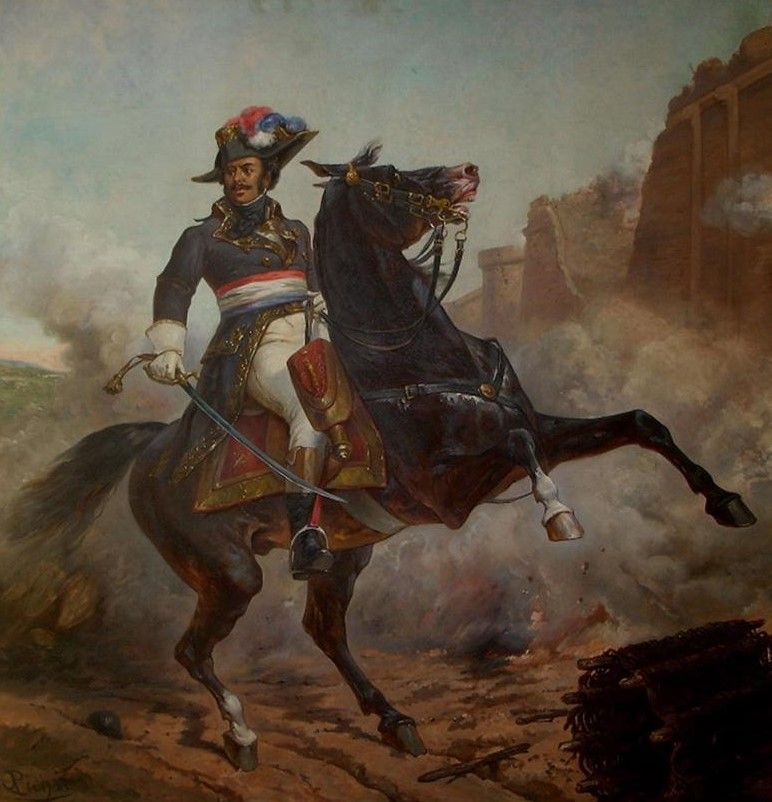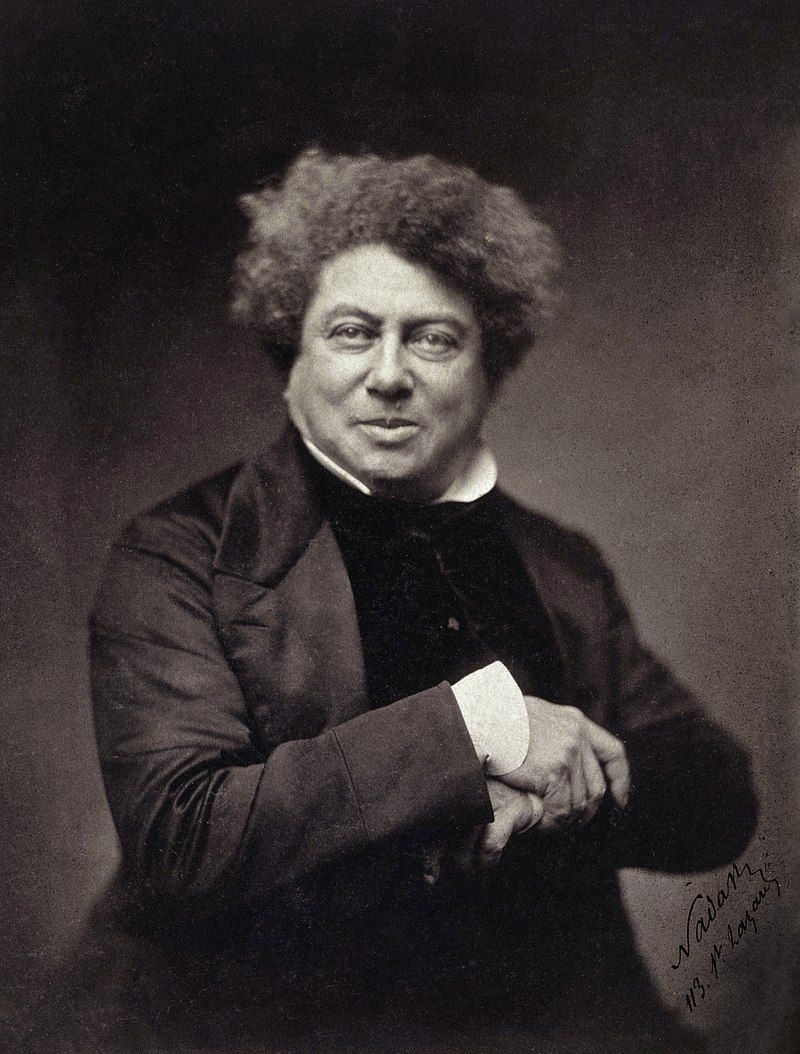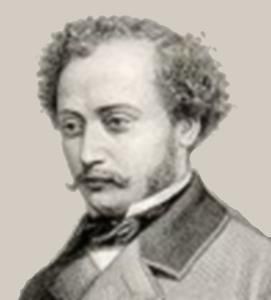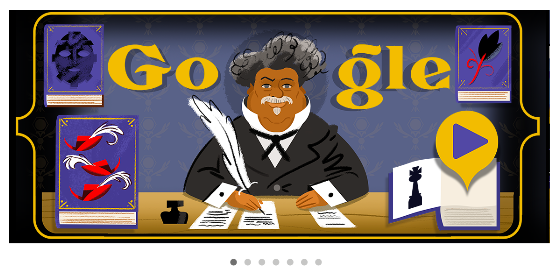1. There Are Actually 3 Men Named Alexandre Dumas
2. He Has A Google Doodle
On the anniversary of the original publication of the first installment of The Count of Monte Cristo, Google’s home page featured a lovely Doodle celebrating Dumas! The art and design are by Google Art Director Matt Cruickshank.
3. He Had Four Illegitimate Children (That We Know Of)
Dumas married actress Ida Ferrier in 1840 and they remained married until her death in 1849. He is believed by scholar Claude Schopp to have had about 40 mistresses, with whom he fathered four children. He acknowledged Alexandre Dumas fils at age seven and took over his education, separating him from his mother. The younger Dumas later wrote at length about his belief that fathering an illegitimate child obligated the father to marry the mother.
4. He Did Drugs With Victor Hugo (Really!)
Dumas was a member of the Club des Hashischins, a group that met regularly in Paris to smoke hash. I could not make this up. Club members included Dumas, Hugo, Charles Baudelaire, Gerard de Nerval, Eugene Delacroix, and Honore de Balzac. I. Could. Not. Make. This. Up.
5. He Wrote The Nutcracker (Sort Of)
The Nutcracker and the Mouse King was written by Prussian (German) author E.T.A. Hoffman in 1816. Dumas’s version was written in 1844 with a nearly identical plot, and it was his version that Pyotr Ilyich Tchaikovsky used in 1892 when composing the ballet suite, which is by far the most famous version. (The original choreography was by Marius Petipa and Lev Ivanov.)
6. A Train Station Was Named For Him
If you happen to take the Paris Metro Line 2, you might end up at a station named for Dumas, located under Boulevard de Charonne at its intersection with Rue de Charonne and Rue de Bagnolet, between the Philippe Auguste and Avron metro stations.
7. His Books Were Historical Fiction When He Wrote Them
The Count of Monte Cristo was published in 1844–46 and takes place between 1815 and 1839. The Three Musketeers was published in 1844 and takes place between 1625 and 1628, during the rein of Louis XIII. Its sequels take place 20 and 30 years later (1648 and 1658). He also wrote novels about Louis XIV and Louis XV; The Convert of St. Paul, a novel about ancient Greece and Rome; the Valois romances about the royal house of France from 1328 to 1589, as well as their successors; a book about Robin Hood called The Prince of Thieves; and many other historicals, as well as one vampire novel (The Pale Lady) and The Wolf Leader, considered one of the first werewolf novels.
8. His Works Have Been Adapted Over 200 Times
Although he’s nowhere near the level of Shakespeare or Austen, there have been a lot of adaptations of Dumas’s works, starting with his own stage adaptations. Here are the highlights of his two most famous works’ screen adaptations.
9. He Was Re-Interred on the Bicentennial of His Birth
Per his own wishes, Dumas was buried in his hometown of Villers-Cotterets after his death in 1870. In 2002, French President Jacques Chirac had his remains exhumed and brought to Paris, guarded by Republican Guards dressed as Musketeers. In a televised ceremony, they were interred in the mausoleum at the Panthéon. Chirac gave a speech acknowledging France’s racist past and Dumas’s place in the great French literary canon: the top.
10. His Final Novel Was Published in 2005
The unfinished manuscript for the third novel in his Sainte-Hermine trilogy was found and completed by Claude Schopp, who pieced together the mouse-eaten document and filled in the gaps with his extensive knowledge of Dumas’s writing. The Knight of Sainte-Hermine was published in English in 2008 as The Last Cavalier. If you enjoyed these things you probably didn’t know about Alexandre Dumas, you might like to learn more about O. Henry, find out who Zora Neale Hurston was, get the low-down on Mary Shelley, learn more about Ernest Hemingway, or read my complete guide to Shirley Jackson.





































